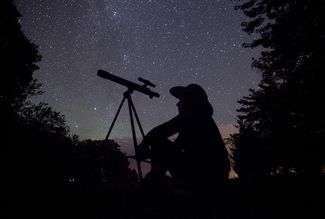Perseid Meteor Shower - AUG 11 - 12
Last updated 8/13/2016 at 9:21am
The Comet Swift-Tuttle is on it's way and with it comes, what will undoubtedly be, the most watched meteor shower of the year. During a peak display, 60 or more Perseid meteors may be seen each hour streaking across the dark sky.
However, if meteor experts from the United States and Russia are correct, this Friday's pre-dawn skies may unleash as many as 150 meteors or more an hour. Unfortunately this is the shower's Zenithal Hourly Rate (ZHR) figure. The ZHR is a normalised quantity based on how many meteors you'd see under perfect conditions watching the whole sky with the radiant directly above your head. The true visual rate will be lower and you can expect to see anywhere between 20-50 meteors per hour around Perseid maximum.
Perseid meteors originate from vast, loose ribbons of sand-size debris shed by Comet Swift-Tuttle, which was discovered in 1862.
As Swift-Tuttle passes into the inner Solar system every 130 years, its debris penetrates the Earth's thin upper atmosphere, the material burns up and disintegrates creating meteors.
The unusual amount of meteors this year appears to be down to the giant planet Jupiter. Astronomers believe it has nudged more of Swift-Tuttle's debris closer to the Earth due to it's gravitational mass.
This large number of "shooting stars" creating the Perseid meteors radiates from an upside down V-. This nest of stars rises in the northeast sky about midnight.
The Perseids meteors may be a few hundred miles away and moving across the sky at a speed of around 40 miles per second but the meteors, which radiat out from the upside down V-shaped constellation called Perseus, will be easy to witness as most will burn up at a height of about 60 miles.
The best time to view this week's Perseids is on Aug. 11-12, after the first quarter moon sets at about 1 a.m.






